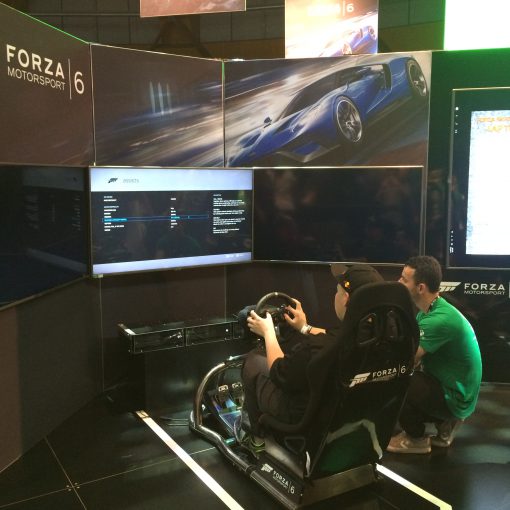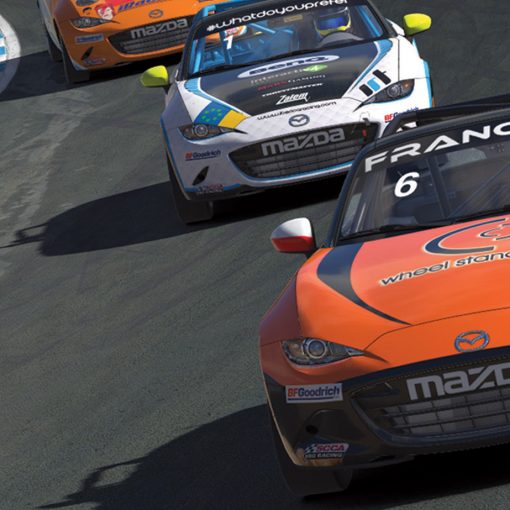After testing various racing simulations, I realized that what I enjoyed the most is the competition against real people. This made iRacing the natural choice. I want to share some of the knowledge that I have gained. My focus, and as such the focus of this article, is on road racing.
Getting your membership
The iRacing Reddit page (which is a good place for asking questions) has discount codes for new memberships. The $5 for 3 months code is a great way to get started. Renewals are more expensive. You can get a discount some time after having your subscription expire (don’t forget to turn off auto-renewal on your account page), and there are always discounts around Black Friday.
There are no discount codes for content (cars and tracks), but you can get a discount by buying multiple items at the same time. You can save on VAT by buying through Paymentwall.
Driving
The most important advice for rookies is: Don’t crash. Don’t crash into other cars, as it will piss the drivers off. Don’t crash your car into the scenery, as it means that a) you will finish at the bottom and b) your safety rating will decrease. That’s important as a safety rating of 3.0 or higher is required for promotion to a higher license class.
- Start out by practising for yourself, in test drive or time attack mode. Get to know the car and the track. Use auto clutch and the sequential gearbox.
- Focus on a clean line instead of maximum speed. Getting around the track consistently without running off is the most important thing in the beginning.
- Once you’ve got this mastered, join one of the open practise sessions with other cars. This will be your first experience of driving with others. If you’re slower, just let the faster car pass. Heed the advice of your spotter – if there’s a car on your right upon entry to a corner, stay on the left. Moving to the right (even if that’s the racing line) will just have you crash, without any benefit.
- When you’re confident in the track, your car control, and driving around other cars, it’s time for your first race. Don’t worry about going fast, just keep it on the track and yield to faster cars. If you survive the first lap, and don’t crash later on, chances are you’ll finish in the mid-field and gain some safety rating. Use the relative view (F3) to see who’s before and behind you and on which lap they are. If you’ve spun off the track, don’t go back on the track if you see someone approaching in the relative view.
- Practise, practise, practise. Watch YouTube videos of the track you are currently racing. Don’t forget to turn on the Delta feature with Tab to see where you’re gaining and losing time.
- Check your field of view. The default field of view is very wide, which gives you a good overview, but a poor feeling of where the car is relative to the track. You can use this Field of View Calculator to determine the proper FoV for your monitor size and viewing distance.
The MX-5
As Rookie in road racing, the two series available are the Global MX-5 Cup and the Production Car Challenge. Both feature the ND-model MX-5. It’s a great car to begin with, as it is geared towards understeer and easy to drive. Some general guidelines that I have learned are:
- Don’t up-shift too late. You should shift by the third yellow or first red light.
- The MX-5, being low-powered, is a momentum car. This means that you want to carry as much speed as possible through the turns. If you follow faster drivers or watch videos, you’ll see that many corners are approached from as far outside as possible. This gives the widest radius through the corner.
- Don’t accelerate too early. You might be inclined, especially if you braked a bit too hard, to step on the throttle. This causes weight transfer to the rear and thus understeer on a car that is already prone to understeer. You will have to come off the throttle and correct, losing time in the process and stressing the tires.
- Try a gear higher. Close to the redline as you exit a corner? Try e.g. third instead of second gear. You’ll have to downshift less before the corner, reducing the chance of unsettling the car. Your speed through the corner may be higher and you don’t lose time upshifting while accelerating.
- Learn to trail brake. Common wisdom is to have all your braking done before turning in, but this is actually not the fastest way to drive. A bit of braking while turning in has two benefits. First, you can start braking later. Second, the associated weight transfer to the front means that there is less understeer, meaning that the car can be quicker through the turn.
- Be smooth. Sliding about costs time.
After Rookie
Once your safety rating has increased to 3.00 or higher, you will immediately be promoted to D-class. D-class opens up a whole load of new racing series:
- The Fanatec Global Challenge, with the Cadillac CTS-V and the Kia Optima. The CTS-V is a free car.
- The Ferrari GT3 Challenge.
- The Formula Renault 2.0 Championship.
- The Grand Touring Cup. The Pontiac Solstice is a free car and may already be familiar from the Production Car Challenge.
- The Spec Racer Ford Challenge. The Spec Racer Ford is a free car. It is a bit tail-happy (prone to oversteer), I suggest dropping the rear anti-roll bar to medium to help with that.
- The Ruf GT3 Challenge.
- The Skip Barber Race series. The Skippy, as it is affectionately known, is a great entry point into the world of open-wheel racing.
All these series have in common that they race on both free and paid tracks. If you don’t want to buy paid content just yet, you’ll have to wait for a week in which the series races on a free track. And you can of course continue to compete in the two Rookie series, which have the added benefit of racing every hour.



